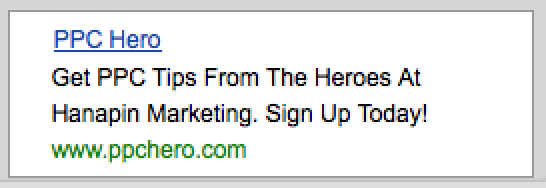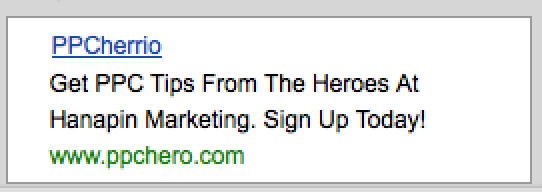Misspellings and typos are part of this wonderful and mysterious world of technology in which we live. Hurriedly typing in a search query while simultaneously performing six other tasks or trying to get your huge thumbs to accurately convey your message on your new phone’s tiny screen, it’s a common problem. In creating a PPC campaign based on those searches, it is only natural to recognize typos as they affect your impressions and conversions, and all other metrics in between.
So, really, how does your performance vary when you choose to let misspellings and variations through the cracks?
The conversation today hinges on the “Include close variants and misspellings” and what to do once you’ve assessed your performance. The “close variant” feature is offered in Adwords in your campaign settings. This is currently the default setting, so unless you’ve opted out of this feature, you’re currently pulling in the five following variations:
Misspellings — “lisence plates” instead of “license plates”
Singular or plural forms — “drivers ed classes” instead of “drivers ed class”
Acronyms — “DMV” instead of “Department of Motor Vehicles”
Abbreviations — “DMV in NYC” instead of “DMV in New York City”
Stemming — “getting a passport photo” instead of “get a passport photo”
As your account is bringing in variations of your carefully chosen keywords, you may wonder if this setting is working for you. Sean Quadlin has a great post about pulling and pivoting your SQR to best identify what works and what doesn’t. But today, we’re not just looking at when close variants perform and when they don’t. We’re also considering alternatives once you’ve identified your close variant performance.
I pulled a series of reports from an account of mine that has an entire Branded ad group devoted to common misspellings of the company’s brand and main product line. We’re looking at Branded, as this traffic stems from those actively looking for our brand. We can expand into other areas of the account, but it’s likely that the quality behind the search will diminish. Covering all our Branded bases allows us to know that the easy queries are safely directed to our landing page.
Of the reports, I pulled all queries that fell into our Branded campaign, excluding the Typos ad group. From these queries, I sorted out what matched exactly (i.e. Search term = Keyword) and pulled the basic 8 performance metrics.
I then pulled the exact (close variant) matches, only including those with typos, and then the same report but using phrase (close variant) matches.
What were my results?
Here we can see that when we include the variants into our searches, we see a significant shift from the exact matched keywords. While the exact (close variants) remain close in their average CPCs, CTR, and conversion rate, the CPL is 46% higher for the exact variants. The phrase (close variants), however, saw a huge spike in average CPC, but also a leap in CTR and conversion rate. At the end of the day, this pulls an average CPC of $.04 and an average CPL of $2.81. Neither of these varies significantly from the Exact matches, which supports the continued use of close variants in the campaign.
What about those accounts in which you’re catering to the typos you’ve seen? For this question, I pulled an SQR for the campaign that currently houses the account’s “Branded Typos” keywords. These keywords classically convert well, and at reasonable CPAs.
Here we can see that the average CPC is still nice and low, and is actually lower for exact (close variants), although the CTR and CR both suffer a bit. More alarming, however, is the outrageous spike in average CPC and CPL for the phrase (close variants) matches. Although we only have 5 conversions at this inflated CPL, we can identify that the conversion rate is substantially lower for these matches.
So what am I doing about these beautiful reports? I’m optimizing:
First things first, I’m keeping ‘close variants’ running for my Branded campaign. The effect these variants have on my total conversion volume is a .47% increase, the average CPC climbs by a meager 0.31%, and cost per conversion sees just a 0.32% increase. Overall, these are manageable enough lifts to continue bringing in variants.
Secondly, the Typo ad group is actually doing pretty well, itself. As keyword typos have converted, they’ve been brought into this ad group for the cultivating. That particular typo is then excluded from the Branded campaign, so that it’s funneled properly. This has allowed for an intentionally low max CPC, which gives us some flexibility on less qualified searches. The results from our analysis show that our close variants actually have a positive effect on the average CPC, lowering it 5.92%, and also boosting conversions by 10.12%! The average CPL also took a 3.02% dip, which means we’re actually benefiting from these close variant matches.
The caveat: although our Typos ad group is bringing in a lot of new successful queries, it’s also easy for non-Typo traffic to find its way into the ad group. While this isn’t a problem, it does lose us the opportunity to customize our ad copy to the query.
How to get the most out of your typos:
Like any form of successful PPC, breaking out a particular type of performer allows for better management and control. An option in this circumstance is to allow for variants to come through a single campaign type – either Branded or Typos – and set to exclude variants in the other campaign type. This will funnel variants into a campaign of choice and allow for a typo-only build out. Note: the “include variants” setting is at the campaign level. Depending on the breadth of your existing Typo campaign, you may find it easier to keep variants coming through your Branded campaign (as volume will most likely be better).
On the sunny side:
1) A Typo campaign can improve the relevance between the keyword and the search term. In a world where Quality Score is king, showing Google that you value each and every search term can score you better impressions and overall campaign health.
2) You also will have the opportunity to carefully manage the bids associated with these search terms. Because competitors are likely not spending their time on your Branded typos, your bid management has one less battle to face.
3) Budget management. Excluding close variants can reduce wasted spend by excluding potentially unqualified searches (as variants, you’re not managing them, hence potential waste). Pulling typos into a separate campaign gives you a clear idea of what variants are actually working without necessarily spending as you would on a proper Branded campaign.
The considerations one must consider before performing such a breakout are:
1) The account manager labor: value ratio. This process can be as simple or as complicated as you let it become. The gradual build out is a simple way to approach typos, you add to the keyword list (and negative keyword list for your Branded campaign) as you encounter them.
2) The dreaded DKI trap. Please, please do not allow a sweeping upload of all your DKI ads to hit a Typo breakout you’ve created. Using DKI ads for a keyword in your Typo campaign can make a great ad go from:
So as you embark on an analysis of your close variant performance, you may start to realize that a Typo breakout is the right option for you! Or maybe, just maybe, you’ve got your own little secret of what to do with your typos. Let your fellow PPC Heroes know what they’re missing!








